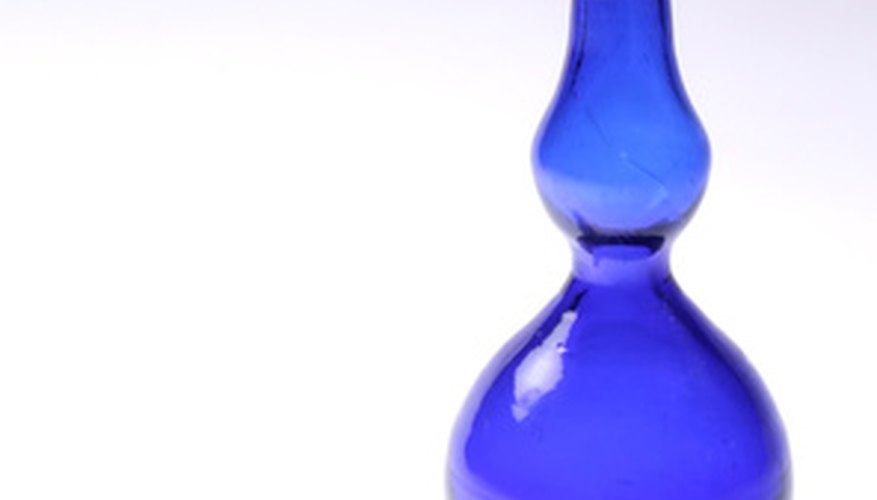Glass is a hard substance that consists of sand, soda ash and limestone. When these substances are heated together, their molecules bond to form the substance we know as glass. We use glass for many purposes, and glass bottles have become a popular method of storage, as well as being used in chemical experiments.
Solid
Glass is a solid material. In solid objects, the bonds between molecules are tighter than in liquid objects, so there is less movement between them. This means glass is a dense material that will not change shape unless heated to a high temperature. Glass is malleable when heated but, as a solid, if you apply too much pressure to glass one way or another, it will break.
- Glass is a solid material.
- Glass is malleable when heated but, as a solid, if you apply too much pressure to glass one way or another, it will break.
Durable
Due to the strong bonds between the molecules in glass, it is also durable. Glass' strength and durability will depend on its thickness; thin sheets of glass are easier to break than thicker sheets. Glass is also difficult to scratch, and you will need a sharp object or apply pressure to do this. It is this durability that means glass bottles can hold liquid without breaking.
- Due to the strong bonds between the molecules in glass, it is also durable.
- It is this durability that means glass bottles can hold liquid without breaking.
Inert
Glass is not reactive to other materials and will not be corroded by most acids. This makes it suitable for use in laboratories and to hold acidic food and drink. The only acids that will react with glass are hydrofluoric acid and concentrated phosphoric acid. Adding boron to the glass ingredients will help improve its resistance to corrosion.
- Glass is not reactive to other materials and will not be corroded by most acids.
- Adding boron to the glass ingredients will help improve its resistance to corrosion.
Absorbs Heat
Glass absorbs and transmits heat, meaning if you heated a glass bottle, the temperature of the contents inside would also rise. Heat causes the molecules in the glass to vibrate faster, and these vibrations are passed from molecule to molecule. The extra energy and friction between each molecule causes the glass to heat up. This energy is then passed on to contents inside the bottle.
- Glass absorbs and transmits heat, meaning if you heated a glass bottle, the temperature of the contents inside would also rise.
- Heat causes the molecules in the glass to vibrate faster, and these vibrations are passed from molecule to molecule.
Optical Properties
Glass bottles can be coloured, but glass itself is a transparent substance. This means you can see through it. Glass is good at refracting light and separating the colours of the spectrum, as well as reflecting and transmitting light. With glass bottles, this property means you can usually see the contents of the bottle through the glass.
- Glass bottles can be coloured, but glass itself is a transparent substance.
- Glass is good at refracting light and separating the colours of the spectrum, as well as reflecting and transmitting light.
